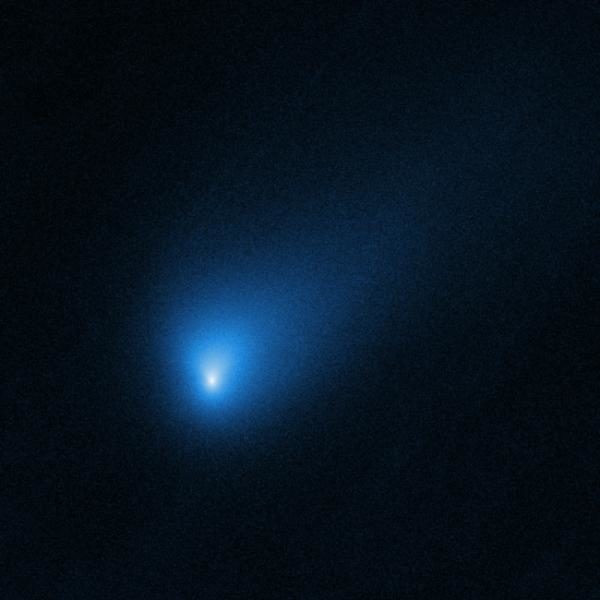
Hubble's observations from earlier this month show that the dust, structure and chemical composition of the interstellar comet look a lot like those of the comets from our own cosmic neighborhood. Among the observed features was the classic halo of dust that comets usually have around their nuclei, or hearts.
"Though another star system could be quite different from our own, the fact that the comet's properties appear to be very similar to those of the solar system's building blocks is very remarkable," Amaya Moro-Martin, an assistant astronomer at the Space Telescope Science Institute in Baltimore, which manages Hubble operations, said in a statement from NASA.
Until Comet 2I/Borisov appeared, all cataloged comets came from two locations: the Kuiper Belt — an area near the edge of our solar system where larger objects, such as Pluto and MU69, reside — and the Oort Cloud of icy objects located about 1 light-year from our sun. (A light-year is the distance light travels in a year, which is roughly 6 trillion miles, or 10 trillion kilometers.)
Comets that originate in the outskirts of the solar system can become visible to people on Earth when they get kicked into the inner solar system through gravitational nudges, perhaps via stars passing by. As a comet gets closer to the sun, its icy surface begins to vaporize, leaving behind a "tail" of dust and gas.
Cometary orbits are usually elliptical, meaning a comet's path in space appears as a stretched-out oval that makes a close pass around the sun before heading toward the outskirts of the solar system. But Comet 2I/Borisov is different; its orbit is hyperbolic, resembling an open-ended arc, because it is cruising into the solar system briefly before leaving forever.
Comet 2I/Borisov is only the second known interstellar visitor to our solar system. The first was an object known as 1I/'Oumuamua, an elongated, rock-like object that made a brief pass within Mercury's orbit in 2017 before zooming away, presumably forever. Borisov, fortunately, is expected to stay within the solar system until mid-2020, providing more time for observations. The comet's closest approach to the sun, which will occur in December, will be at roughly 186 million miles (300 million km), or twice Earth's average distance from the sun.
Comment: 'Oumuamua reclassified from 'asteroid' to 'comet' (because they're essentially the same thing)
Although interstellar visitors have only recently been proven with observations, a new study suggests that interstellar objects are quite common, Hubble astronomers said. There could be thousands of such objects within the solar system at any one time, although most are beyond the reach of modern-day telescopes' observational capabilities. This makes observations of Borisov valuable, especially because it is so different from 'Oumuamua.
"Whereas 'Oumuamua appeared to be a rock, Borisov is really active, more like a normal comet," observation leader David Jewitt, of the University of California, Los Angeles, said in the same statement. "It's a puzzle why these two are so different."
Hubble's observations of Borisov happened on Oct. 12, when the comet was about 260 million miles (418 million km) from Earth. Future Hubble observations are planned at least through January, with more proposals being considered for later in 2020.



Is that fact or conjecture? Perhaps - related to highly likely and most probable.